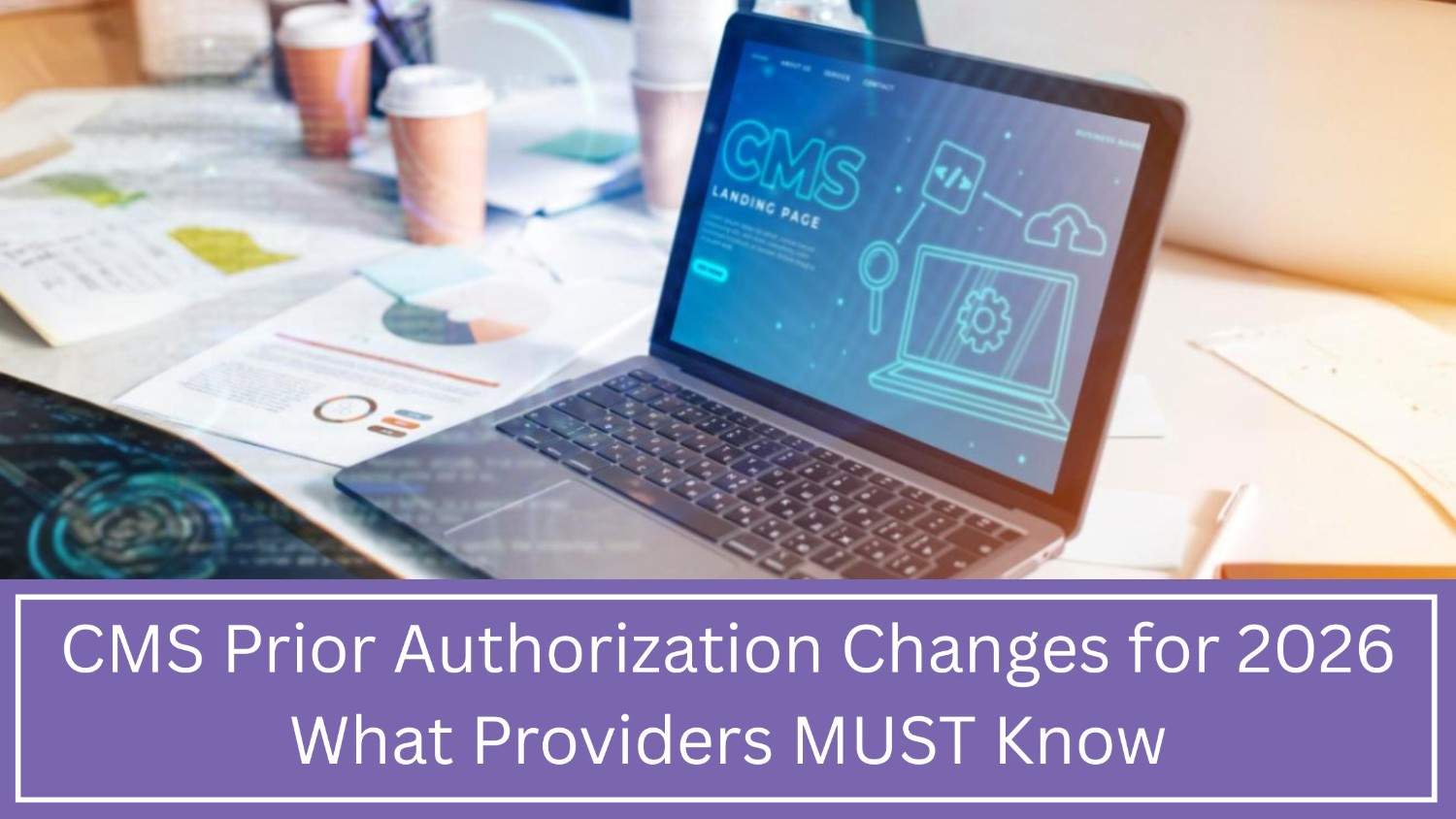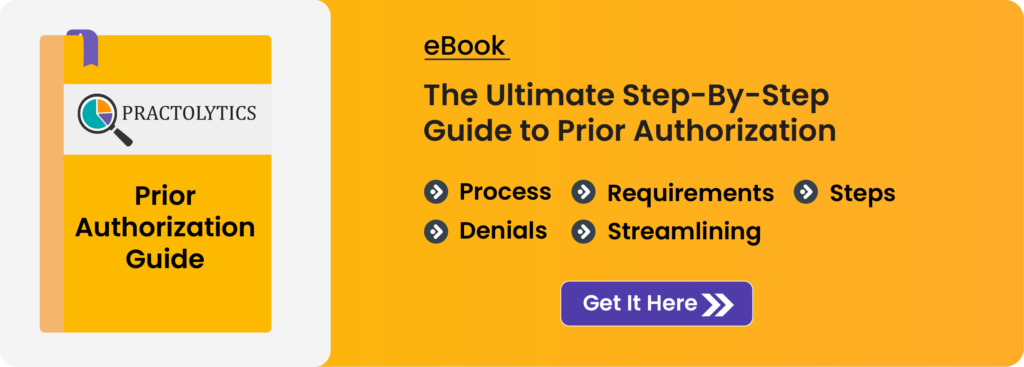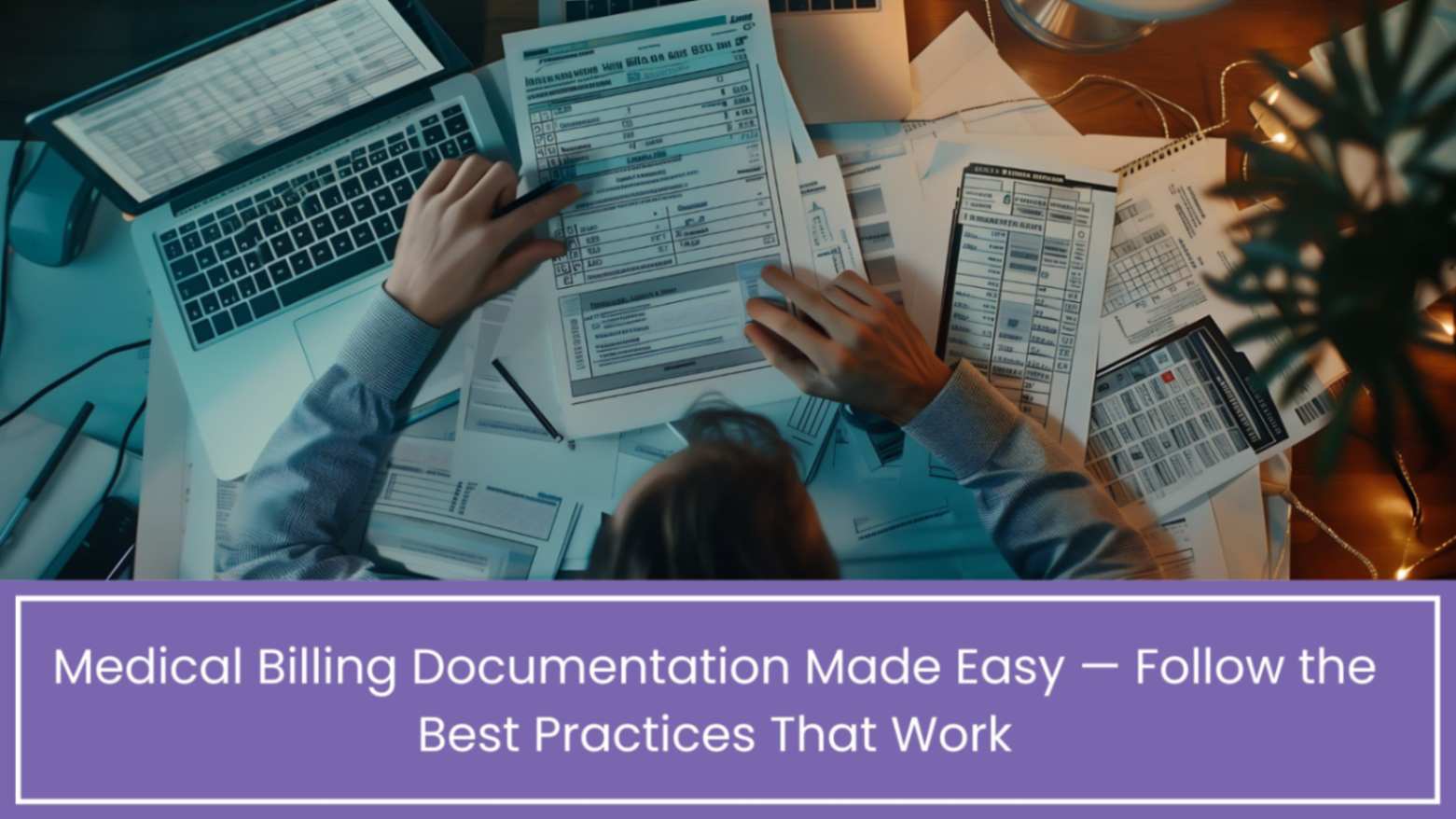CMS Prior Authorization Changes for 2026 What Providers MUST Know
CMS Prior Authorization Changes for 2026 What Providers MUST Know—clinicians’ handling of records, payer decision tracking, and approval requests are facing major shifts under the updated CMS rules. These changes bring tighter documentation standards, mandatory digital sign-offs, faster response timelines, and required API data sharing. Preparing early helps providers avoid delays, denials, and lost revenue. This blog breaks down the WISeR trial, new Medicare Advantage processing windows, e-PA requirements, all critical policy changes, and real workflow adaptations. It also highlights trends, real-world examples, and technology tools helping teams stay compliant and efficient as 2026 approaches.
Table of Contents
CMS 2026 Prior Authorization Updates and Key Provider Guide
If you’re a healthcare leader or medical billing manager, you’ve likely noticed rising challenges with prior authorizations. Now, Medicare & Medicaid (CMS) is introducing major 2026 updates. These will transform how you submit requests, how quickly insurers must reply, and what your daily process requires. Ignore these shifts and risk payment delays, claim denials, lost revenue, and unhappy patients. Let’s explore what’s changing, then discuss actionable steps to adapt.
Why Prior Authorization Is Under Major Focus
PA is meant to confirm medical coverage fits care needs. But now:
- It causes delays and extra work for care teams.
- A recent AMA survey shows 89% of doctors see PA delays in care, and 1 in 3 link delays to harm.
- CMS sees PA as a tool to stop waste and fraud while protecting patient access.
- New pilots and rules mark a change: from fixing approvals late to setting clarity early.
Bottom line: PA shifts aren’t small changes—they’re core improvements.
Key 2026 Changes You Must Know
1. The WISeR Pilot for Traditional Medicare
- Starting January 1, 2026, Medicare’s new WISeR plan begins in Arizona, New Jersey, Ohio, Oklahoma, Texas, and Washington.
- This focuses on 17 outpatient services like nerve stimulators and knee surgeries that often get overused.
- For these services, doctors must choose between getting advance approval or risking claim delays or denials.
Bottom line: Traditional Medicare now requires pre-approval, too.
2. Medicare Advantage (MA) and Response-Time Rules
- MA plans must act fast starting in 2026:
- Answer standard requests in 7 days, urgent ones in 72 hours.
- Insurers need to openly show approval, denial, and appeal numbers.
- Submit complete clinical documents upfront—missing details risk claim denial.
3. Electronic Prior Authorization & API-Driven Workflows
- The final rule CMS-0057-F requires health plans to use FHIR® APIs for patient data, provider access, payer transfers, and healthcare prior authorizations.
- For providers: check patient coverage instantly, see what documents are needed, and track authorization requests easily.
If your team still uses faxes or calls for this work, you’re falling behind.
Why These Changes Matter for Your Practice
- Faster decision speeds require complete patient details immediately—no waiting.
- Clearer visibility shows why claims get denied, so you can fix issues quickly.
- Digital systems are vital—paperwork wastes money and staff time.
- Busy specialists like pain doctors, bone surgeons, and brain experts face the toughest pressure.
- Payment delays from skipped or late approvals disrupt services, claims, and cash flow.
Practical Steps to Prepare (Your Provider Checklist)
Audit your prior authorization workflow immediately.
- Which services often require prior authorization?
- What’s your average time from request to decision?
- Which documents frequently get overlooked?
Refresh clinical templates and paperwork.
- Capture diagnosis, background, care plan, and testing.
- Train staff to gather complete details upfront.
Get better digital prior authorization tools.
- Pick systems that link to insurers, show live updates, and handle files.
- Set up automatic tracking and reminders.
Train teams on 7-day / 72-hour turnaround rules
- Standard requests need wrapping in 7 days, urgent ones in 72 hours.
- If your workflow doesn’t match this, adjust it.
Track these essentials
- Time to submit prior authorizations
- Approval vs denial rates
- Claims stalled due to missing PAs
- Delay between PA submission and claim filing
For specialty strategy
- If affected by the WISeR pilot, align services with the 17 categories and create a pre-submission roadmap.
- Initiate clear communication early—don’t wait for service dates.
Emerging Trends & What to Watch
- Payer simplification: Companies like Humana will cut one-third of outpatient prior authorization rules by January 2026.
- Health equity focus: Medicare Advantage plans must track how prior authorization affects underserved groups and report equity impacts.
- Pre-payment reviews increase: Claims without prior authorization face clinical review or payment holds before processing.
- Hybrid workflows: Companies blend staff, outsourced help, and automation for prior authorization prep.
- Technology gap: Only 35% of health plans used full e-PA systems in 2024, per a 2025 study. This must improve quickly.
Case Example: What a Practice Should Do
Imagine a multi-location bone clinic handling many knee surgeries.
- They identify knee surgery (one of 17 key services) as their test case.
- Their checklist covers: patient history, past treatments, pain levels, scans, and proof that other options failed.
- They use digital tools linked to insurers; staff see missing files before sending requests.
- They track: approval speed, first-pass approvals, and claims held up by unfinished paperwork.
By mid-2026, they’ll have cut wait times and run claims smoothly—no last-minute rejections.
The Bottom Line
The PA game changes fast for 2026. If your team just sends requests and waits, you lose. Treat PA like a crucial traffic jam: nail paperwork, use tech tools, track results, and beat payer deadlines.
Conclusion — How Practolytics Can Help
PA changes feel tough—but Practolytics has your back.
We built tools to simplify processes right now:
- Capture patient data upfront, auto-submit PAs
- Track approvals instantly so nothing gets missed
- Monitor WISeR pilot and Medicare Advantage services
- Free your team from paperwork for patient care
Clear tools. Real results.
If you’re ready for 2026, Practolytics helps build your PA workflow. Protect income, speed up care, and stay compliant. Ask for a free review now. Be ready for what’s ahead.
Read More – Prior Authorization Services for Podiatry : improving Patient Access and Care






